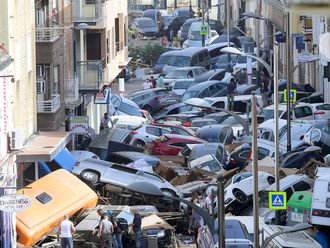
Muscat: They may seem like new phenomena, but cyclones in Oman may simply be regular occurrences, according to two scientists, who have discovered proof of similar natural disasters in the past.
"Natural hazards are known to have affected the Sultanate in the past, for example tropical cyclones and associated flooding," explains Professor Dr Goesta Hoffmann, adding that there have been two in Oman in the last three years.
The German researcher is part of a team of Geosciences professors and research assistants from the German University of Technology in Oman (GUtech) and its German parent-university RWTH Aachen University, currently studying coastal evolution in Oman and the impact of climate change on the country.
Hoffmann explained that since there is little information recorded on climatic events, the scientists use geological archives, so called proxy-data, to reconstruct events. "This is especially important as these results form the basis for a statistical analysis of such extreme events, which can be used to reveal recurrence intervals," he said.
The geoscientists also plan to investigate natural hazards such as hurricanes, tsunamis and earthquakes. "All of them are known of have affected the Sultanate in past decades," the researcher said.
The study is backed by the German Research Foundation and includes an examination of sedimentary deposits, like sand, seashells and plants dating back 100 to 1,000 years ago.
"We have already discovered 130 sequences of rock structures that indicate rain events. Clay and sand merges into clay, which indicates rain," pointed out Professor Hoffmann. "When a wadi bed is flooded, sand and plant remains are transported into the wadi and then immediately the sand sinks to the bottom and the clay remains on the top."
He added that by studying the formation of rocks, amongst other factors, it is possible to figure out how often climatic events occurred.
"With each rain a layer of around 10 centimetres is formed. This layer is special for heavy rains. The thicker the rock, the more it has rained," he said. "According to the structure of the rocks, we can conclude the number, duration and intensity of the event. We can analyse the statistics and reveal how often such extreme natural events occur."
The laboratory research and field work is taking place in the Ras Al Hadd Lagoon in Al Sharquiyah region and in several wadis in the capital area.












